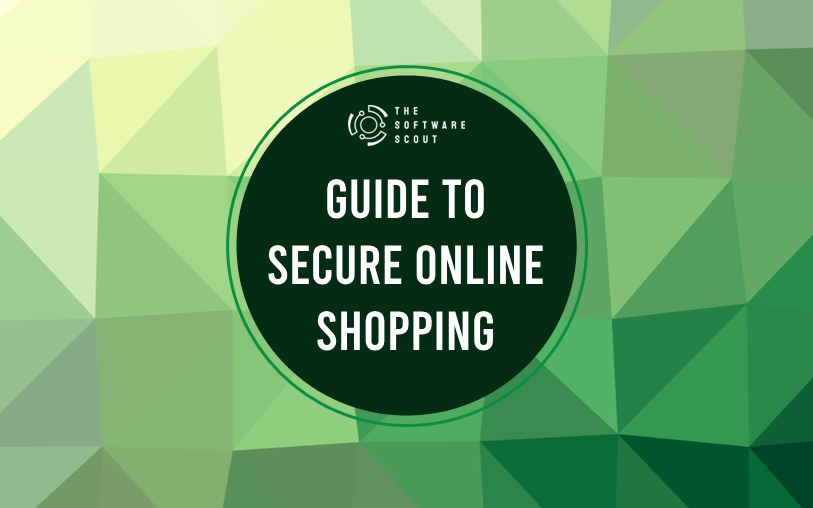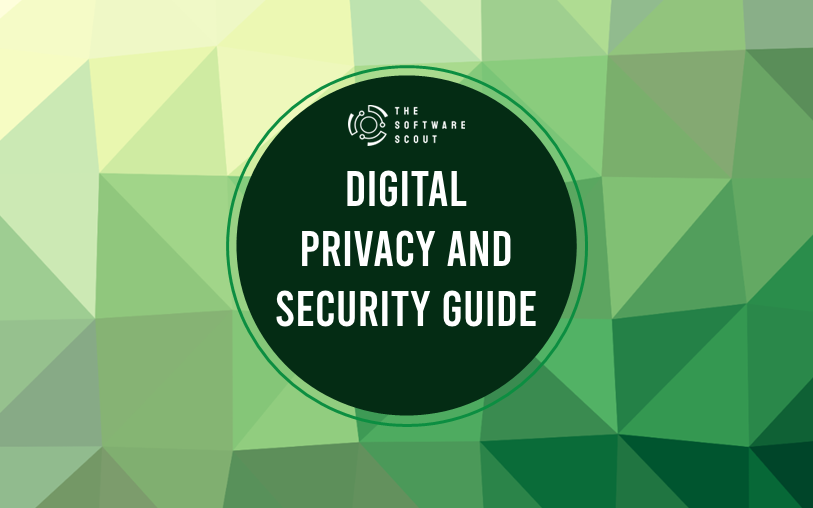Online shopping is easy, convenient, and increasingly popular. But as more people buy online, there’s also an increased risk of encountering scams, fraud, and data breaches. Knowing how to shop safely can help you enjoy all the benefits of online shopping without compromising your personal information.
This guide covers everything you need to know for a secure online shopping experience, from identifying trustworthy websites to protecting your payment information.

Why Online Shopping Security Matters
The convenience of online shopping makes it a go-to option for millions, but it’s also a prime target for cybercriminals. Whether it’s data theft, phishing scams, or fake websites, the risks are real. Securing your online shopping habits not only protects your financial details but also helps prevent identity theft, preserving your privacy and peace of mind.
1. Shop Only on Secure Websites
Choosing secure websites is the first step to safe online shopping. But what makes a website secure?
Signs of a Secure Website:
- URL Begins with “https”: The “s” stands for secure, meaning the site uses encryption to protect your data.
- Padlock Icon: Found in the URL bar, this indicates the site is using SSL encryption.
- No Grammar or Spelling Errors: Legitimate websites are typically well-designed and error-free.
- Official Domain Name: Check for subtle misspellings or extra characters in the URL. Scammers often mimic popular websites to trick shoppers.
Tools to Verify Site Safety:
- Google Safe Browsing: Enter the URL to check if Google considers the site secure.
- Browser Warnings: Modern browsers often flag sites they believe are dangerous. If your browser warns you about a site, it’s best to avoid it.
Sticking with these basics can save you from fake websites and phishing schemes that are crafted to look legitimate.
2. Use Strong, Unique Passwords and Multi-Factor Authentication
Creating strong passwords and enabling multi-factor authentication (MFA) are essential for online security.
Password Tips for Secure Shopping:
- Use a Password Manager: Tools like LastPass or 1Password generate and store strong passwords, making it easy to have unique ones for each site.
- Avoid Personal Information: Steer clear of names, birthdays, or simple sequences like “12345.”
- Opt for Length Over Complexity: Longer passwords (12+ characters) are more secure than short, complex ones.
Multi-factor authentication (MFA) adds a second layer of protection by requiring a code, usually sent to your phone or email, making it much harder for cybercriminals to access your accounts.
3. Beware of Phishing Scams
Phishing scams are fraudulent attempts to obtain sensitive information by pretending to be a trustworthy entity, like a popular shopping site. Phishing attacks can appear in emails, texts, or even ads.
Common Phishing Red Flags:
- Emails with Urgent Language: Scammers often create a sense of urgency, like “Your account will be locked” or “Act now to claim your prize.”
- Unknown Email Addresses: Genuine companies usually contact you from official email addresses.
- Links in Emails: If an email prompts you to click a link, hover over it to reveal the URL. If it looks suspicious or doesn’t match the official website, don’t click.
How to Handle Suspicious Messages
If you receive a suspicious message, don’t respond. Instead:
- Report the Email: Most email providers have a “Report Phishing” option.
- Contact the Company Directly: If unsure, go to the official website and reach out to customer support.
By staying vigilant about phishing tactics, you can avoid the risk of revealing sensitive information.
4. Use Secure Payment Methods
Secure payment methods offer protection if something goes wrong during a purchase. Here’s a breakdown of the most secure ways to pay online:
Credit Cards vs. Debit Cards
- Credit Cards: These are often the safest option for online purchases due to fraud protection policies. Most credit card providers offer zero liability for unauthorized charges.
- Debit Cards: These are linked directly to your bank account, making fraud more financially damaging if your details are compromised. Avoid using them for online shopping if possible.
Other Secure Payment Methods
- PayPal: Provides added security by acting as an intermediary between your bank and the retailer, keeping your financial details private.
- Virtual Credit Cards: Some credit card companies offer virtual numbers for online transactions. This disposable number helps protect your real card number.
- Mobile Payment Services: Services like Apple Pay or Google Pay use tokenization, which substitutes sensitive data with encrypted tokens.
Choosing a secure payment method minimizes risks and often makes resolving potential disputes easier.
5. Avoid Public Wi-Fi for Shopping
Public Wi-Fi networks are convenient, but they’re also vulnerable to attacks. Hackers can easily intercept data on unsecured networks, including login credentials and payment details.
Best Practices for Shopping Securely on Public Wi-Fi:
- Use a VPN: A Virtual Private Network encrypts your data, making it much harder for hackers to access your information.
- Turn Off File Sharing: This reduces the risk of unauthorized access to your device.
- Avoid Sensitive Transactions: It’s best to avoid online shopping, banking, or any activity involving sensitive information on public Wi-Fi.
If you must shop on public Wi-Fi, a VPN is a must-have for secure browsing.
6. Keep Your Software and Devices Updated
Regular software updates aren’t just about new features—they often patch security vulnerabilities that could expose you to risks.
Update Essentials for Secure Shopping:
- Operating System: Regular updates keep your system’s security protocols current.
- Web Browser: Browsers like Chrome, Firefox, and Safari constantly release updates to improve security against threats.
- Security Software: Antivirus and anti-malware software can detect and block potential threats.
Staying on top of updates reduces your risk of encountering malware, making your shopping experience more secure.
7. Read Reviews and Check Seller Information
Before making a purchase from an unfamiliar online store, verify its reputation. Online reviews can reveal valuable insights into other shoppers’ experiences.
How to Evaluate Online Reviews
- Check Multiple Sources: Reviews on sites like Trustpilot or Google Reviews can provide a balanced view.
- Look for Consistent Feedback: Repeated issues like “never received item” or “poor customer service” are red flags.
- Be Wary of Extremes: Reviews that seem overly negative or positive could be biased or fake.
Contact Information
Legitimate websites usually provide clear contact information, including an address, phone number, and customer support details. A lack of contact information is often a sign of an untrustworthy site.
8. Monitor Your Accounts Regularly
Even with all these precautions, it’s wise to keep an eye on your financial accounts for any unauthorized transactions.
Tips for Monitoring Account Activity:
- Set Up Account Alerts: Many banks and credit cards offer alerts for transactions over a certain amount, helping you detect suspicious activity quickly.
- Review Monthly Statements: Checking your statements allows you to spot unusual charges that could indicate fraud.
- Use a Dedicated Account for Online Shopping: If possible, set up a separate bank account or credit card just for online purchases. This limits the damage if your account details are compromised.
Regular monitoring helps you catch issues early, reducing potential losses and making fraud easier to dispute.
9. Beware of Deals That Seem Too Good to Be True
Scammers often lure buyers with offers that seem impossibly cheap or exclusive. While it’s tempting to jump on these deals, they can be red flags for phishing scams, counterfeit products, or unreliable sellers.
How to Spot Suspicious Deals:
- Research the Product Price: If a deal is significantly lower than the average market price, it’s probably too good to be true.
- Check the Return Policy: Reputable sites often have clear, customer-friendly return policies.
- Look for Verified Seller Badges: Platforms like Amazon and eBay label trusted sellers, providing some peace of mind.
If a deal looks suspicious, it’s best to shop elsewhere.
Recognize and Avoid Fake Reviews
Fake reviews are a common tactic used by scammers to make fraudulent websites or subpar products seem trustworthy. They can be challenging to spot, but knowing a few key indicators can help. Fake reviews often have overly enthusiastic language or generic praise, with little detail about the product itself. Look for detailed reviews that provide specifics about the product’s quality, performance, and customer experience—genuine reviews usually share both pros and cons. Using browser extensions like Fakespot or ReviewMeta can also help analyze reviews and flag potentially unreliable feedback, giving you an added layer of insight before making a purchase.
Check Privacy Policies and Data Handling
When shopping online, you often provide sensitive personal data, from payment information to contact details. Understanding how this data is handled can protect you from potential misuse. Reputable websites usually have a clear, accessible privacy policy that outlines how they collect, store, and protect your information. Check for policies on data sharing, especially with third parties. Avoid sites with unclear or vague privacy policies, as they might sell your data to advertisers or expose it to other risks. Familiarizing yourself with these policies helps you know exactly what you’re agreeing to and ensures that your information remains protected.
Consider Using Disposable Emails for Extra Security
For added protection against spam or data breaches, consider using a disposable email address for online shopping accounts. Services like ProtonMail or TempMail allow you to create temporary email addresses, which can shield your primary email account from unsolicited marketing emails or phishing attempts. Disposable emails are especially helpful for one-time purchases or on sites you’re unlikely to use regularly. By creating a layer between your personal email and the online store, you reduce the risk of exposing your primary account to unwanted contact or data leaks, making your shopping experience more secure.
Final Thoughts on Secure Online Shopping
Staying secure while shopping online doesn’t require technical expertise; it’s all about applying smart habits and recognizing potential red flags. From choosing trustworthy websites and secure payment methods to being cautious on public Wi-Fi, a few simple steps can greatly reduce your risk.
Building these habits will help you enjoy a worry-free online shopping experience. Whether you’re buying essentials or snagging holiday deals, shopping securely is a smart investment in your digital safety.
Boyd Hudson is a technology writer at The Software Scout with over 15 years of experience in technology roles across the Asia-Pacific region. He covers a wide range of tech topics, from software solutions to emerging industry trends

